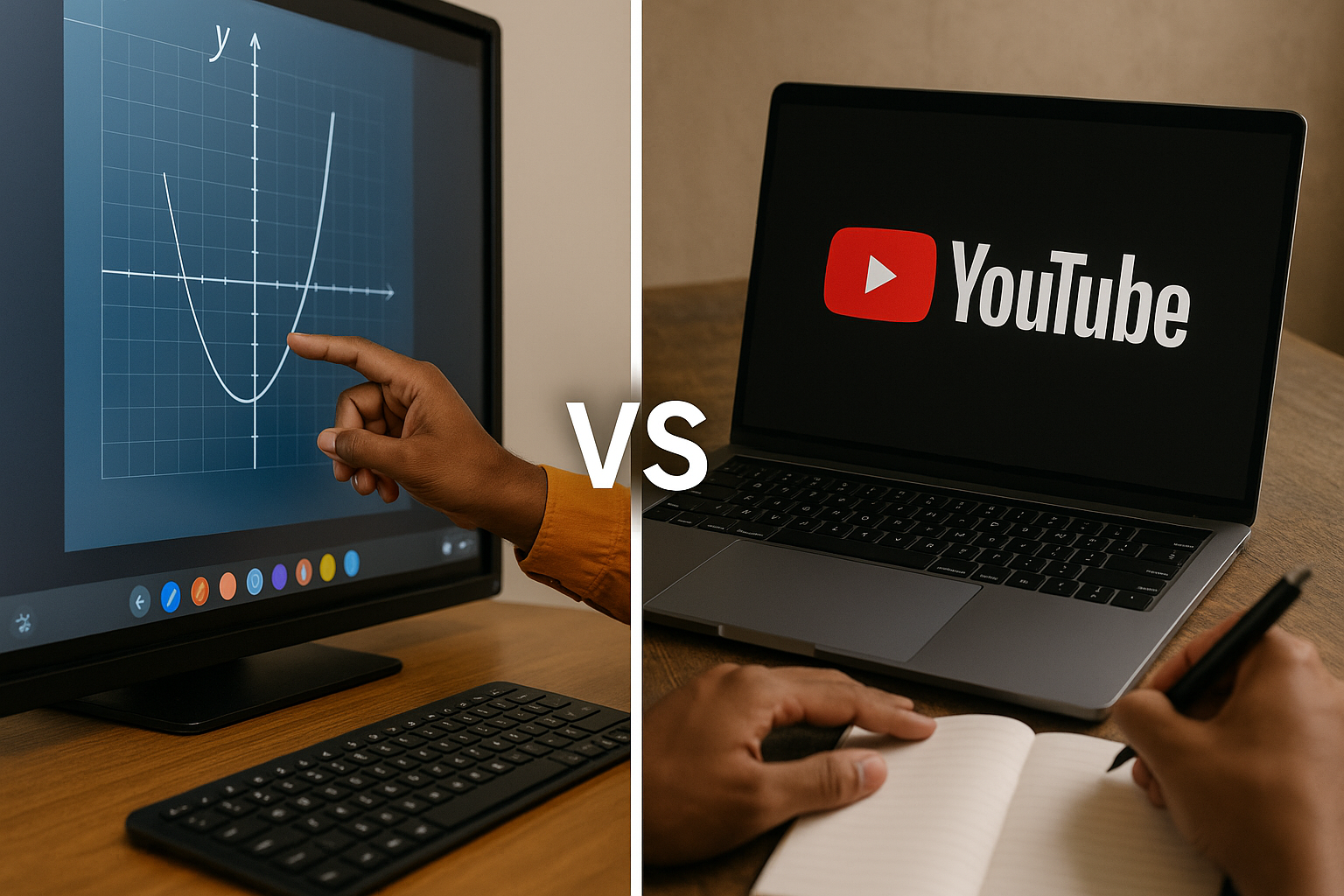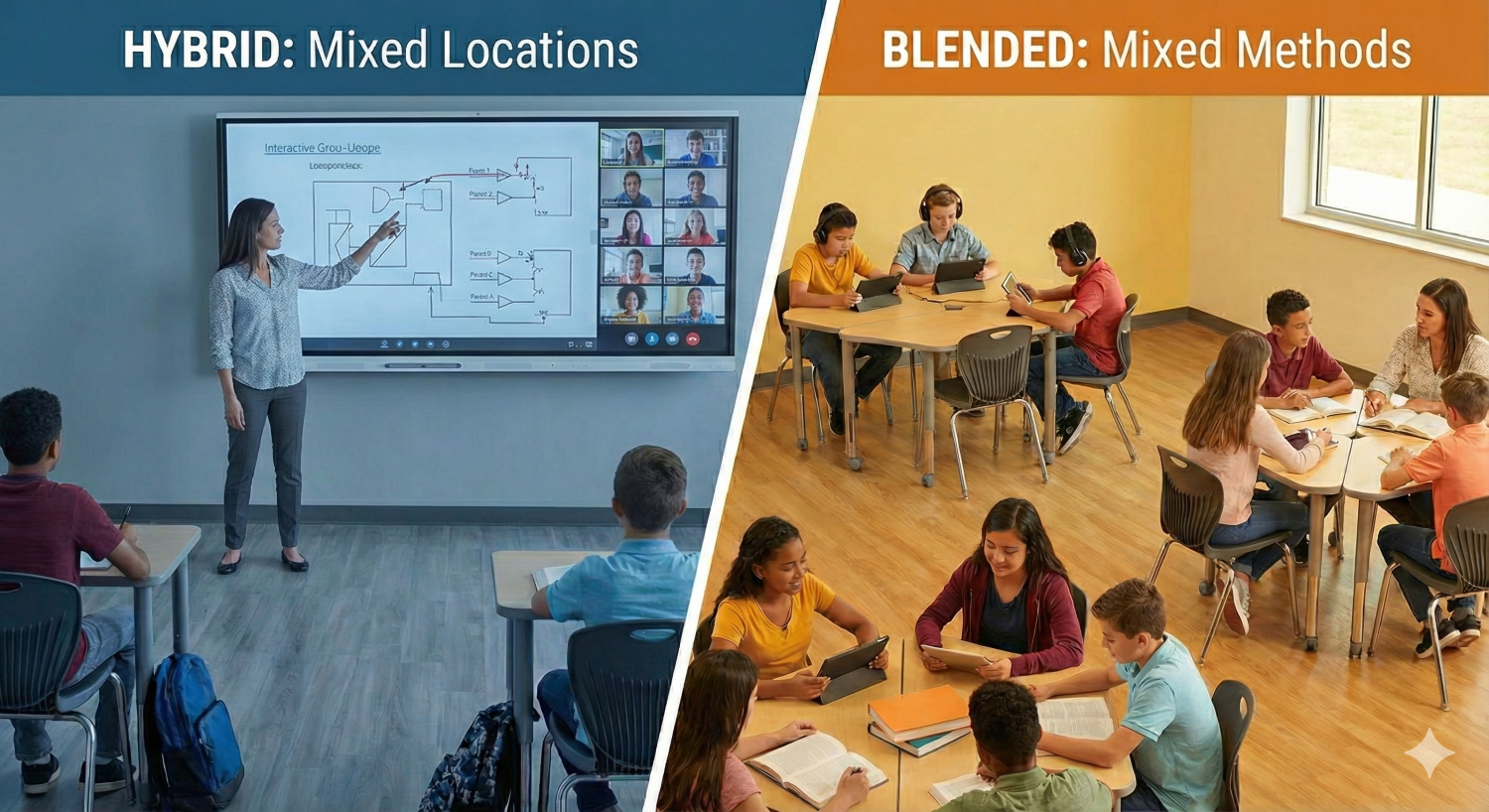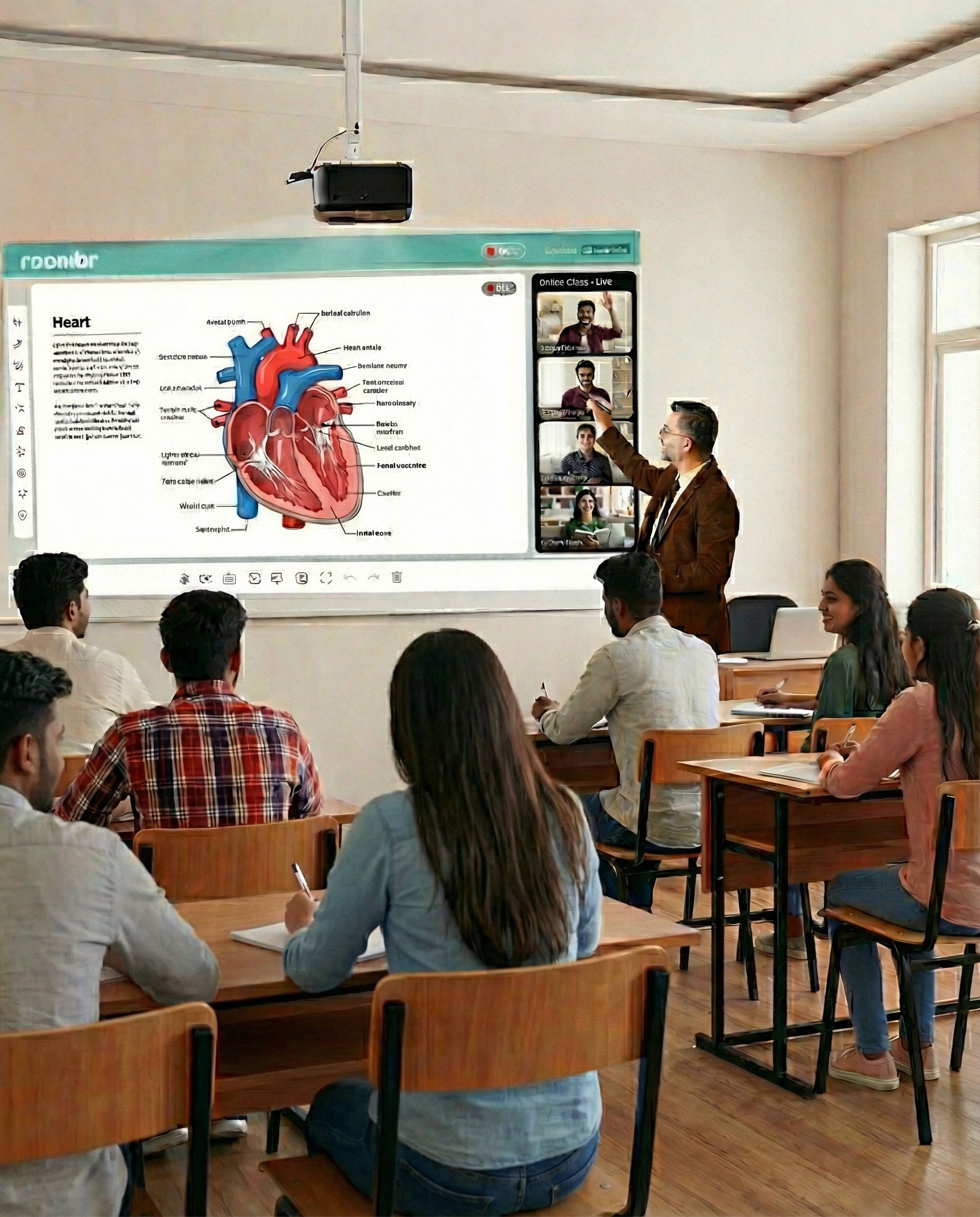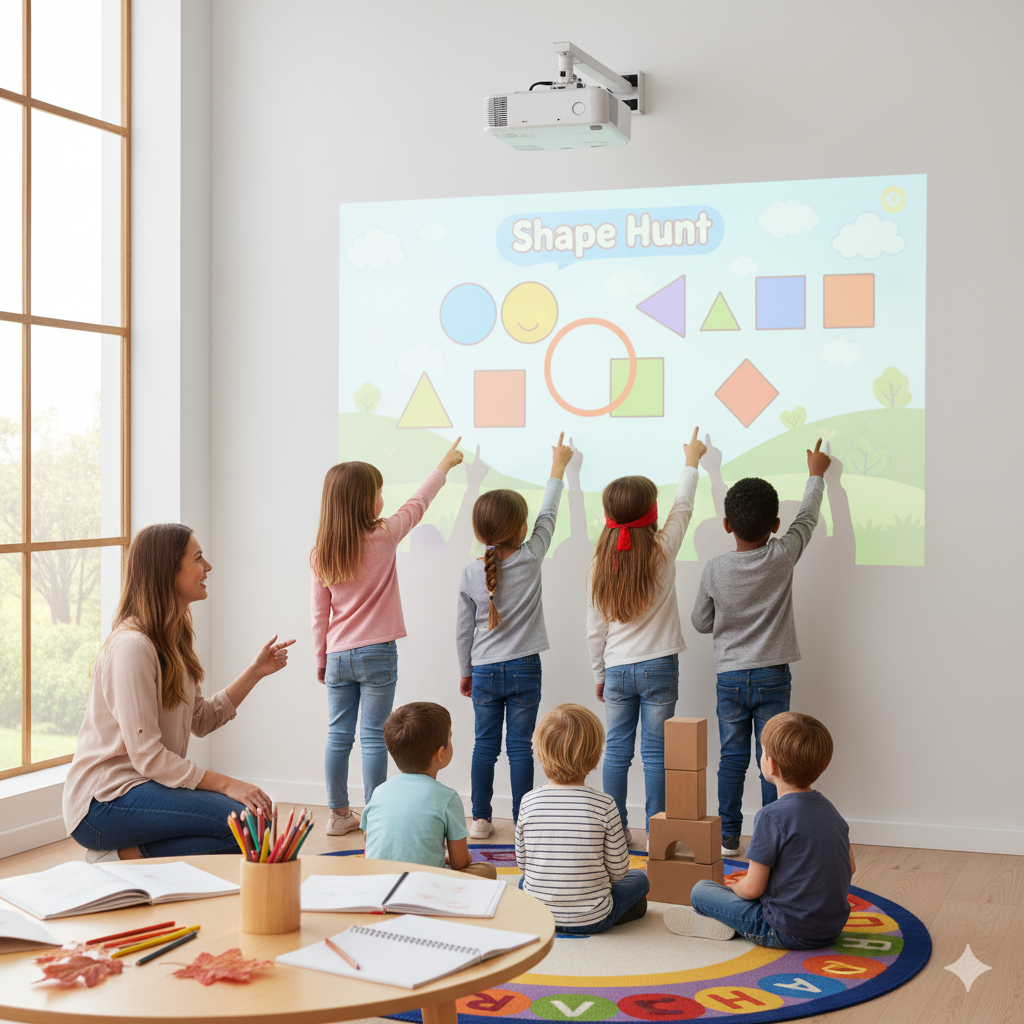Digital Classrooms vs YouTube: Why Structured Learning Matters for Academic Progress

YouTube has become one of the most used learning platforms in India. From math tutorials to historical explainers, students across age groups are using it to supplement what they learn in school. It’s easy, accessible, and mostly free. But does it deliver real academic progress?
Educators are now rethinking this model. While YouTube has plenty of content, it usually lacks the structure and depth needed to understand a concept. For institutions where long-term learning outcomes matter, this is a critical concern.
Structured learning is not just about the syllabus. It's about delivering knowledge in a way that builds over time. And this is where a digital classroom makes the difference.
This article discusses why structured learning offered by digital classrooms wins over Youtube learning.
Content Access vs Academic Progress
YouTube helps curious students explore topics outside the classroom. But when schools start depending on the platform as a primary teaching resource, problems start to appear.
Digital classrooms, on the other hand, offer a system of delivery. Lessons are created by teachers and linked to the curriculum. Students get assessments, instant doubt-clearing, and tools to work together in groups.
It’s the difference between watching a cooking video and enrolling in a culinary course. One sparks interest, and the other builds expertise.
The Limitations of YouTube as an Educational Tool
1. Lack of Structure
YouTube has no lesson plans. A student watching a biology video today might jump to a physics reel tomorrow. There’s no clear learning path. For K–12 students especially, this kind of fragmentation leads to confusion rather than clarity.
In contrast, a digital classroom setup is intentionally structured. Teachers follow a roadmap. Content is sequenced for retention. Students are guided through concepts instead of being left to explore aimlessly.
2. No Quality Control
Not all YouTube content is created equal. Many creators lack formal teaching backgrounds. Some explain complex topics in oversimplified ways, while others go too deep without context. Misinformation and half-knowledge are real risks.
Digital classrooms for kids use carefully reviewed content. Experts design it to match the child’s age and level, making it accurate and easy to understand.
3. Limited Engagement
Watching a video is passive. Students don't interact, question, or apply what they see. This often leads to shallow understanding.
A true digital classroom makes learning active. Interactive elements like quizzes, polls, annotations, and gamified tasks turn students from watchers into participants.
4. No Interaction or Feedback
This is perhaps the biggest limitation. YouTube doesn’t talk back. Students can't ask questions or clarify doubts. There's no teacher, no feedback loop.
In a digital classroom, however, students engage with educators in the class or through recordings. There’s room to ask questions, share ideas, and get feedback which is essential for clear understanding.
5. Distraction-Heavy Environment
YouTube thrives on algorithms. After one lesson, students are nudged towards entertainment. A history explainer might lead to music videos, gaming streams, or even irrelevant ads.
This is particularly harmful in younger age groups. A child might start with a lesson on planets but quickly end up watching toy videos. It’s more than a missed lesson. It shifts their focus away from learning.
The Advantages of Digital Classrooms
While YouTube can ignite curiosity, it cannot replace a thoughtfully built digital classroom. For educators across India, the need is not just access but effectiveness. A well-designed digital classroom setup delivers structured, interactive, and measurable learning that evolves with the student.
Let’s explore how.
1. Interactive E-Content That Promotes Real Learning
In a digital classroom, content isn’t limited to passive video. Students engage with multimedia lessons that include quizzes, drag-and-drop tasks, real-time annotations, and even live polls. These tools allow learners to participate, respond, and reflect, rather than just watch.
Simulations help explain abstract concepts. For example, a chemistry experiment can be conducted virtually with guided steps. Students interact with the content, not just observe it.
This kind of design boosts retention and builds conceptual clarity, especially for visual and kinesthetic learners.
2. Personalized Learning That Adapts to Each Student
One of the biggest challenges in traditional classrooms is pace mismatch. Some students race ahead while others struggle to keep up. YouTube doesn’t solve this. It treats every viewer the same.
Digital classrooms, however, offer personalized learning. Whether AI-driven or teacher-guided, adaptive systems adjust lesson complexity based on student responses. If a child struggles with fractions, for example, the system may redirect them to simpler practice problems before moving forward.
This ensures no student is left behind. And high performers remain challenged with enriched material.
3. Hybrid Learning That Supports Flexibility
After the pandemic, schools began to value hybrid learning. But moving between online and offline tools can feel disconnected.
A modern digital classroom offers a unified hybrid solution. Students can attend live classes or revisit recordings. Homework, notes, and assessments remain synced across platforms.
Roombr, for instance, allows teachers to record live lessons while teaching on a large-format interactive display. This ensures that absent students don’t fall behind and everyone has access to revision-ready material.
4. Collaboration and Engagement in Real-Time
Learning isn't just individual—it’s social. In a digital classroom, collaboration tools are built into the platform. Features like group activities, breakout rooms, live chat, polls, and shared whiteboards encourage participation.
This kind of digital collaboration in classrooms mimics the engagement of group projects or peer discussions in a physical setting. It also builds communication and teamwork skills that are essential in higher education and beyond.
These tools work especially well in subjects that demand interpretation, such as literature, or debate-based learning, such as civics.
5. Ready-to-Use Content Aligned with the Curriculum
YouTube has content on every topic but little of it aligned to the syllabus of different subjects taught in different educational institutions.
In a digital classroom, content is tailored to each grade and linked to the curriculum. Teachers choose what fits their lessons, and students avoid irrelevant or repeated content.
Roombr supports NCERT, CBSE, ICSE, and state boards, with multi-language support where needed. This ensures inclusivity and coherence, especially in diverse Indian classrooms.
6. Teacher Support, When It’s Needed Most
Unlike on-demand videos, digital classrooms support real teacher intervention. Educators can answer doubts live, offer feedback on assignments, and track student progress over time.
This teacher support is crucial. A timely explanation can clear up confusion and boost understanding. It also builds trust, which helps keep students motivated.
Features like hand-raising, in-class annotations, and one-on-one doubt sessions are all built into the classroom’s digital ecosystem.
Why Structured Digital Classrooms Are Crucial for Kids
Younger learners need structure. Their cognitive development depends on routine, repetition, guided exploration, and meaningful interaction. YouTube doesn’t offer that.
A digital classroom for kids is intentionally designed to combine play and pedagogy. It ensures screen time is safe, distraction-free, and age-appropriate. There are no autoplay distractions, no ads, and no risk of jumping to irrelevant content.
Educators can also structure lessons step by step, starting simple and slowly adding complexity, so children don’t feel overwhelmed.
In short, these setups aren't just digital—they're developmental. They’re built to help students retain, reflect, and respond to knowledge in ways that support long-term academic success.
Digital Classrooms Track Progress—YouTube Doesn’t
In today’s learning environments, what gets measured gets improved. YouTube may offer unlimited content, but it does not provide any mechanism for tracking student understanding or progress. In contrast, a structured digital classroom setup is purpose-built to generate actionable insights.
Real-Time Dashboards for Teachers
Teachers can instantly see:
- Attendance and participation levels
- Quiz and assignment scores
- Time spent on each topic or module
- Learning habits and areas where students are struggling
This helps educators identify who needs support and who’s ready for advanced challenges, without waiting for term-end reports.
Progress Visibility for Parents and Students
In a digital classroom:
- Parents get regular updates and access to performance summaries.
- Students receive real-time feedback on their work, allowing for self-correction.
- Both can track growth over weeks and months, not just based on final exams.
This transparency builds accountability and keeps learning on track, even outside school hours.
Continuous Feedback and Data-Driven Learning
Unlike traditional models that rely on occasional testing, modern digital classrooms enable:
- Ongoing assessments through polls, quizzes, and interactive tasks
- Instant feedback loops are built into the learning journey
- Personalised suggestions for teachers and students based on progress data
Final Thoughts
There’s no denying YouTube’s appeal. It’s fast, engaging, and accessible. For many learners, it’s a useful way to explore new topics or revise familiar ones. But inspiration alone isn’t enough for structured education.
Digital classrooms offer what YouTube cannot—depth, structure, accountability, and community. They enable learning that is guided, measurable, and aligned with academic standards. More importantly, they create space for real interaction between students, teachers, and content.
In India’s rapidly evolving education landscape, decision-makers are rethinking their approach. The focus is shifting from content delivery to outcome-driven learning environments.
If the goal is to build future-ready learners, a strong digital classroom setup is a strategic necessity. With the right tools, schools and colleges can go beyond just teaching. They can inspire, support, and truly transform learning.
FAQs for Educators
1. What is the difference between a digital classroom and YouTube learning?
A digital classroom is a structured, interactive learning environment designed for academic progress, often aligned with school curricula. It includes tools for real-time feedback, assessments, collaboration, and progress tracking.
YouTube learning, on the other hand, offers informal, unstructured videos without consistency, feedback, or curriculum alignment. While useful for revision, it lacks accountability and measurable outcomes.
2. Can YouTube replace a digital classroom for school education?
Not entirely. YouTube can supplement learning, but it cannot replace a digital classroom. Schools need structured content, feedback loops, and teacher-student interaction, which YouTube doesn't offer. In India, the National Education Policy (NEP 2020) also encourages integrated digital solutions that ensure curriculum alignment and outcome-based learning, which platforms like Roombr provide.
3. Why is structured learning important in digital classrooms for kids?
Structured learning helps children develop cognitive, social, and emotional skills in a safe, distraction-free environment. A digital classroom for kids ensures lessons are age-appropriate, curriculum-aligned, and interactive. Unlike YouTube, it avoids autoplay distractions and irrelevant content, promoting focused learning and long-term retention.
4. What should Indian schools look for when choosing a digital classroom setup?
Schools in India should prioritise:
- Curriculum alignment with CBSE, ICSE, or state boards
- Interactive features like quizzes and annotations
- Real-time feedback and teacher support
- Data tracking and performance dashboards
- Scalability for hybrid learning environments
Explore Curriculum-Aligned Solutions Like Roombr
With Roombr, you get a scalable, curriculum-aligned digital classroom solution that fits your existing infrastructure and supports both K–12 and higher education needs. From real-time collaboration to AI-powered insights, Roombr empowers educators to teach better and helps students learn smarter. Whether you're managing a school, college, or any other educational institution, Roombr adapts to your teaching goals without complicated installations or inflated costs.
Explore Roombr and see how structured digital learning can deliver measurable academic impact. Book a free digital classroom demo here.
Foziya Abuwala
Share
Step Into the future of
Education with Roombr

















